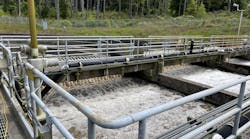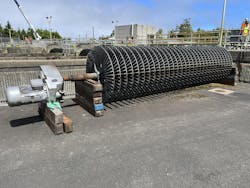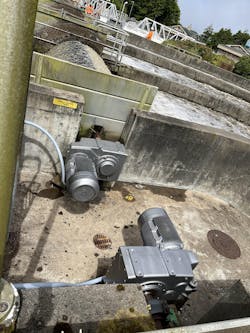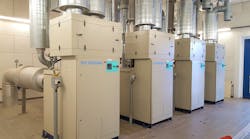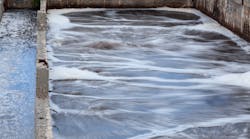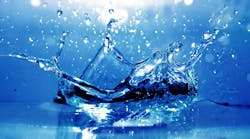Latest from Plant Operations
NORD DRIVESYSTEMS Helps Wastewater Treatment Plant Expand Basins
Few of us give much thought to the water we use to flush our toilets and wash our dishes, especially once it goes down the drain. Fortunately for the City of Newport and its 10,000 or so citizens, Andrew Grant does. He and his team at the Vance Avery Wastewater Treatment Plant in South Beach, Oregon, are committed to keeping effluent safe, their facility dependable, and operating costs under control.
It’s not an easy job. Processing requirements can vary dramatically from one day to the next, and without the right equipment, serious problems can result.
“The story of Newport is one of tourism and growth,” says Grant, who supervises the facility. “Not only has the population increased significantly since Vance Avery was constructed in 2002, but we get many visitors on the weekends and holidays. We’re in coastal Oregon, so if there’s a heat dome in the valley or it’s the 4th of July weekend, people come out here on short notice, which creates unexpected demand on the facility. Because of this, we began to see some deficits in our ability to treat wastes.”
Welcome to the Farm
Grant noted that there are many ways to skin the wastewater cat; his facility uses a biological treatment method, which relies on microorganisms to eat dissolved solids in the waste stream. One of his many tasks is to keep those microbes happy and healthy, which requires a delicate balance of nutrients and oxygen. This is supplied by huge wheels that turn continuously, drawing fresh air into an aeration basin and helping the inhabitants thrive.
“A treatment plant is much like a farm,” he adds. “The amount of air we provide determines how quickly the bugs grow and can therefore metabolize the waste. In our case, the basin is 1.44 million gallons (5.4 million liters), and we’re keeping all that water moving in a circle to keep the solids in suspension. The problem is the peaking factor—where our town’s base population is 10,000, we often need to accommodate four times that number for several days or even a week. That’s why it’s important to have plenty of capacity, not to mention redundancy in our equipment.
”As the city’s population increased and its tourism business expanded, Grant determined it was time to perform a condition and criticality assessment. The results were less than favorable. “We found that the condition of our aeration basin was poor. It’s a highly critical piece of infrastructure, so we began plans to expand it and, simultaneously, replace a few pieces of broken equipment.”
A Successful Test Case
That was in 2019. Grant contacted to Jake Simpson, Account Representative for industrial supplier and NORD DRIVESYSTEMS distributor Motion in nearby Albany. Simpson contacted NORD District Sales Manager, Brent McNeill, and the two visited the facility for an assessment.
Because the most immediate need was to get the aerators running at full capacity, they recommended a temporary solution—a pair of the company’s 25 hp CLINCHER parallel shaft gear units with UNICASE design and variable frequency drives. The test units used NORD’s direct drive concept with hollow bore mount and NEMA C-face input for direct mounted motors. They were delivered fully assembled from the factory and are designed to run reliably without belts, sheaves or pulleys, eliminating the need to maintain these worn parts or cover them with guards to protect operators.
“It was a proof of concept,” says Grant. “We like to try before we buy, and seeing that there’s no bypass for the aeration tank, I needed to make sure they would work as promised. As it turned out, we tested those units for two years and were quite happy with their performance.”
He and his team decided it was time to go ahead with an upgrade of the entire facility. They were running into serious capacity limitations, and new gear motors would allow them to speed up the aerators when needed, thereby increasing microbe growth. But seeing as the funding would come from taxpayer dollars, Grant did his due diligence and put the project up for competitive bid.
“Even though we had documented success with the NORD product, it’s my responsibility to be a judicious steward of the city’s resources,” he explains. “So not only did we invite others to bid on the job, but we also got quotes on repairing the old gear motors. NORD came in with a better price than all of them.”
Increased Growth
Grant’s team had installed the first pair of gear motors. For the project’s second phase, they looked to Motion for the next 6. They also replaced “every rotating component except for the shafts.”
Again, there was no chance for a facility shutdown, so they used a phased approach, completing half of the installation before moving on to the rest.
“It was a pretty sizable project,” says Motion’s Simpson. “But we found early on that since the NORD gearboxes can be turned on their side, it was easy to fit them into the available space.”
There was more to the project than installation. Grant notes that the Pacific Northwest environment is extreme. Between the salt air, frequent rain, and wind gusts of 90 mph (145 kph), he’s learned to drill “weep holes” anywhere water might collect. Doing so helps to reduce the rust that might otherwise form and keeps maintenance to a minimum. So do the “huge oil reservoirs” in the NORD gearboxes, which were another selling feature.
“By loading them with synthetic oil, we can keep the maintenance down to one-year intervals,” he says. “That’s a big deal for us.” So are energy costs.
As indicated earlier, the budget was a key project metric and played a large role in Grant’s decision to go with NORD. Since then, however, he’s discovered an additional bonus—the new gear motors with the variable frequency drive are 12% more energy-efficient than the legacy units. This might not sound like much, but it’s enough to save the facility over $30,000 on its electric bill annually, never mind the fact that its aeration capability has increased by more than 50%.
“Our previous capacity was 600 lb. (272 kg)of oxygen per hour,” says Grant. “We upgraded that to 930 lb. (422 kg) with this project, so it’s a significant expansion. That gives us redundancy and the ability to keep up with peak demand. It also reduces our maintenance costs; since the old units had sheave drives, we always drove into town for replacement belts and then took the units down for service. Not anymore. Our job here is very important. We’re a fishing community, and when the water leaves here, it gets discharged offshore. Yes, it’s 98% pure, but it goes into our ocean, our crabbing grounds, and our beaches, and we treat that responsibility very seriously. So I’m quite pleased with the outcome, and glad that NORD and Motion were able to provide us with such a robust solution. It’s been a great project.”










